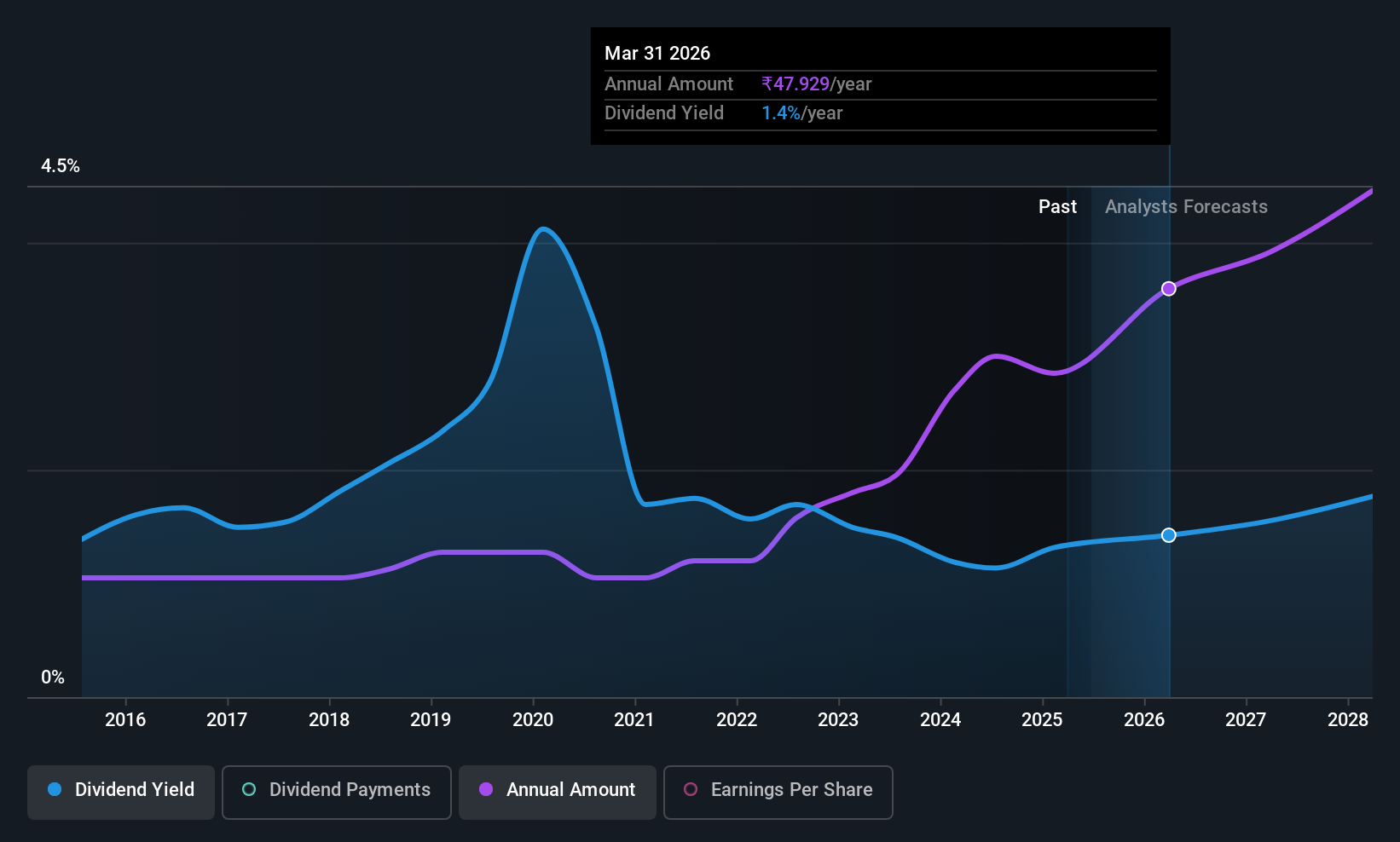Cummins India's (NSE:CUMMINSIND) Shareholders Will Receive A Bigger Dividend Than Last Year

The board of Cummins India Limited (NSE:CUMMINSIND) has announced that it will be paying its dividend of ₹33.50 on the 7th of September, an increased payment from last year's comparable dividend. This will take the annual payment to 1.5% of the stock price, which is above what most companies in the industry pay.
Cummins India's Payment Could Potentially Have Solid Earnings Coverage
Impressive dividend yields are good, but this doesn't matter much if the payments can't be sustained. At the time of the last dividend payment, Cummins India was paying out a very large proportion of what it was earning and 99% of cash flows. Paying out such a high proportion of cash flows can expose the business to needing to cut the dividend if the business runs into some challenges.
Over the next year, EPS is forecast to expand by 38.6%. If the dividend continues along recent trends, we estimate the payout ratio will be 57%, which is in the range that makes us comfortable with the sustainability of the dividend.

View our latest analysis for Cummins India
Dividend Volatility
Although the company has a long dividend history, it has been cut at least once in the last 10 years. Since 2015, the dividend has gone from ₹13.00 total annually to ₹51.50. This implies that the company grew its distributions at a yearly rate of about 15% over that duration. Dividends have grown rapidly over this time, but with cuts in the past we are not certain that this stock will be a reliable source of income in the future.
The Dividend Looks Likely To Grow
With a relatively unstable dividend, it's even more important to see if earnings per share is growing. It's encouraging to see that Cummins India has been growing its earnings per share at 23% a year over the past five years. However, Cummins India isn't reinvesting a lot back into the business, so we wonder how quickly it will be able to grow in the future.
Our Thoughts On Cummins India's Dividend
In summary, while it's always good to see the dividend being raised, we don't think Cummins India's payments are rock solid. While the low payout ratio is a redeeming feature, this is offset by the minimal cash to cover the payments. This company is not in the top tier of income providing stocks.
Companies possessing a stable dividend policy will likely enjoy greater investor interest than those suffering from a more inconsistent approach. However, there are other things to consider for investors when analysing stock performance. Taking the debate a bit further, we've identified 1 warning sign for Cummins India that investors need to be conscious of moving forward. Looking for more high-yielding dividend ideas? Try our collection of strong dividend payers.
New: AI Stock Screener & Alerts
Our new AI Stock Screener scans the market every day to uncover opportunities.
• Dividend Powerhouses (3%+ Yield)
• Undervalued Small Caps with Insider Buying
• High growth Tech and AI Companies
Or build your own from over 50 metrics.
Have feedback on this article? Concerned about the content? Get in touch with us directly. Alternatively, email editorial-team (at) simplywallst.com.
This article by Simply Wall St is general in nature. We provide commentary based on historical data and analyst forecasts only using an unbiased methodology and our articles are not intended to be financial advice. It does not constitute a recommendation to buy or sell any stock, and does not take account of your objectives, or your financial situation. We aim to bring you long-term focused analysis driven by fundamental data. Note that our analysis may not factor in the latest price-sensitive company announcements or qualitative material. Simply Wall St has no position in any stocks mentioned.
About NSEI:CUMMINSIND
Cummins India
Engages in the design, manufacture, distribution, and service of engines, generator sets, and related technologies in India, Nepal, and Bhutan.
Flawless balance sheet with solid track record and pays a dividend.
Market Insights
Community Narratives




